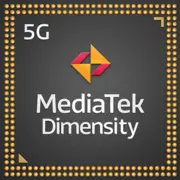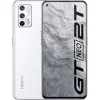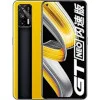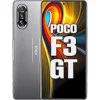MediaTek Dimensity 1200

MediaTek Dimensity 1200: The Balance of Performance and Affordability in 2025
April 2025
Introduction
The MediaTek Dimensity 1200, released in 2021, marked an important milestone in the development of mobile processors. Despite the emergence of newer chips, it maintains its relevance in mid-budget smartphones ($300–500) by offering decent performance, 5G support, and energy efficiency by 2025. In this article, we will explore what makes this SoC noteworthy, how it performs in modern tasks, and who it is suitable for.
Architecture and Process Technology: The Foundation of Stability
The Dimensity 1200 is built on TSMC's 6nm process technology, which, by 2025, is not considered cutting-edge (leading chips have transitioned to 3–4nm) but remains a reliable option for balancing power and heat dissipation.
CPU:
- 8 cores with hybrid architecture:
- 1× Cortex-A78 @3.0 GHz (high-performance core);
- 3× Cortex-A78 @2.6 GHz (mid-load);
- 4× Cortex-A55 @2.0 GHz (energy-efficient tasks).
- L2 Cache: 320 KB (per A78 cluster).
This configuration ensures smooth multitasking: demanding applications run on powerful cores, while background processes leverage the energy-efficient cores.
GPU: Mali-G77 MC9 with 9 cores.
- Supports games with graphics up to Medium-HD/High-FHD (60 FPS) but falls short compared to modern GPUs like Mali-G710 or Adreno 7xx in flagship smartphones.
- HyperEngine 3.0 technology optimizes gaming performance by reducing latency.
Performance in Real Tasks: From Gaming to AI
Benchmarks:
- Geekbench 6: 1118 (Single-Core), 3198 (Multi-Core);
- AnTuTu 10: ~708,000 points.
Usage Scenarios:
1. Gaming:
- Genshin Impact: 45–55 FPS at medium settings (1080p);
- PUBG Mobile: 60 FPS in HD quality.
Active cooling in the smartphone is crucial; without it, throttling and FPS drops can occur after 20–30 minutes.
2. Multimedia:
- Supports displays with a refresh rate of 168 Hz (Full HD+);
- Hardware decoding for AV1 and HDR10+ for streaming.
3. AI Tasks:
- Neural network acceleration (up to 12 TOPs) enhances the performance of photo editors (e.g., automatic retouching in Lightroom).
Power Consumption and Heat:
- TDP of 10W is a moderate figure, but under peak load, temperatures may rise to 42–45°C;
- In everyday use (social media, video), the smartphone lasts 12–14 hours;
- Gaming reduces battery life to about 4–5 hours.
Built-in Connectivity Modules: Ready for the Future?
- 5G Modem: Supports SA/NSA with theoretical speeds of up to 4.7 Gbps, but in reality, delivers 1–1.5 Gbps in areas with good coverage.
- Wi-Fi 6: Speeds up to 2.4 Gbps—sufficient for 4K streaming.
- Bluetooth 5.2: Stable connection to wireless headphones and smartwatches.
- Satellite Communication: Absent—this feature is reserved for flagship devices from 2023–2025.
Comparison with Competitors: Where Does Dimensity 1200 Stand?
In 2025, this SoC competes with entry-level chips and those from previous generations:
1. Snapdragon 7 Gen 2 (2023):
- Better energy efficiency (4nm);
- 15% higher GPU performance.
2. Dimensity 8300 (2024):
- Support for Wi-Fi 7;
- High settings gaming capability thanks to the Mali-G615 GPU.
3. Exynos 1380 (2023):
- Comparable CPU performance but weaker in AI tasks.
Conclusion: The Dimensity 1200 lags behind newer chips in energy efficiency and graphics but excels in device pricing.
Usage Scenarios: Comfortable Limits
1. Gaming: Suitable for casual games and medium settings in AAA titles.
2. Everyday Tasks: Smooth operation with 10–15 applications running in the background.
3. Photo and Video:
- Supports cameras up to 200 MP (depends on the manufacturer's implementation);
- 4K@60fps video recording with HDR;
- Night mode with AI noise reduction.
Pros and Cons: An Honest Assessment
✅ Pros:
- Affordable device prices ($300–500);
- Support for 5G and Wi-Fi 6;
- Good optimization for multitasking.
❌ Cons:
- Weaker GPU compared to modern counterparts;
- Heating under prolonged load;
- Lack of satellite connectivity.
Practical Tips for Choosing a Smartphone
1. Cooling: Look for models with vapor chambers or graphite plates.
2. Display: Full HD+ with a refresh rate of 90–120 Hz is ideal for gaming and videos.
3. Battery: At least 5000 mAh to compensate for power consumption.
4. Updates: Look for a guarantee of 2–3 years of Android updates (e.g., Xiaomi and Realme often update their lines).
Examples of 2025 Devices:
- Realme GT Neo 3T ($350): AMOLED 120 Hz, 65W charging.
- Xiaomi Poco X5 Pro+ ($400): 108 MP camera, stereo speakers.
Final Conclusion: Who Is the Dimensity 1200 For?
This processor is a choice for those who:
- Do not want to overpay for flagship models but desire stable performance in games and applications;
- Value 5G support and modern connectivity standards;
- Use their smartphone as a multimedia hub (streaming, photo editing).
Main Benefits: A balance of price and performance, readiness for future networks, and versatility. If you are not a professional streamer or esports player, the Dimensity 1200 remains a cost-effective option in 2025 without unnecessary compromises.
Basic
3x 2.6 GHz – Cortex-A78
4x 2 GHz – Cortex-A55
GPU Specifications
Connectivity
Memory Specifications
Miscellaneous
Benchmarks
Phones with Dimensity 1200










Comparison of Devices with Dimensity 1200
Compared to Other SoC
Share in social media
Or Link To Us
<a href="https://cputronic.com/en/soc/mediatek-dimensity-1200" target="_blank">MediaTek Dimensity 1200</a>